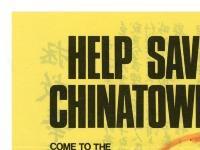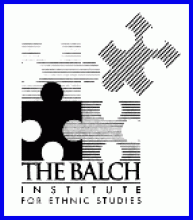In this lesson students will watch the documentary Save Chinatown, as well as evaluate and analyze its contents.
Save Chinatown
Save Chinatown
Essential Questions
Objectives
Students will be able to:
- Identify complex elements of struggles for social change and analyze and evaluate the perspectives of different individuals and organizations involved within a social change movement.
- Compare and contrast different social movements in a single community to locate commonalities in tactics used over time.
- Evaluate photographs as primary-source materials for content, purpose, and effectiveness.
Other Materials
Suggested Instructional Procedures
1. In preparation for viewing the documentary, distribute the Documentary Analysis Graphic Organizer and have each student fill in the preview section.
2. Show the documentary Save Chinatown. While viewing the documentary, students should fill in the second part of the organizer.
3. After completing the documentary, you may have students fill in the last part as a form of assessment or utilize the questions as the basis for a class discussion.
Supplemental Activities
You can use the additional resources to further the lesson by asking students to read the article by Jeff Gammage and note his statistics. What statistics surprise them?
You may also show the students the video Look Forward and Carry on the Past, which discusses the role that culture plays in maintaining the Chinatown community and features video about the anti–baseball stadium struggle.
Vocabulary
Boondoggles: a project funded by the federal government out of political favoritism that is of no real value to the community
Catalytic cinema: using film making as a catalyst for social change
“Chop suey,” restaurants: chop suey is an Americanized word for a Cantonese term jaahpseui which literally means mixed bits. A chop suey restaurant is a restaurant that caters to tourist and serves Americanized Chinese food.
Consortium: a combination, as of corporations, for carrying out a business venture requiring large amounts of capital levied a tariff: imposed a tax on goods
Cultural genocide: a phrase that is used to protest against the destruction of cultural heritage
Cultural reclamation: the act of taking back, or reclaiming, culture
Crucible: a place or situation in which concentrated forces interact to cause or influence change or development
Flop houses: cheap, run-down hotels or rooming houses
Fraternal and district associations: organizations formed through extended family relationships or geographic relationships (if you came from the same village in China).
Imminent: likely to occur at any moment; impending
Institutional anchors: large institutions in communities that can serve to help the community stay in place.
Kin network: a support network made up of extended relatives
Limited English proficiency: limited in the ability to use the English language
Lithography: a method of printing from a metal or stone surface
Mezzotint: a method of engraving on copper or steel by burnishing or scraping away a uniformly roughened surface
Pertinaciously: in a dogged manner
Photogravure: a process, based on photography, by which an engraving is formed on a metal plate, from which ink reproductions are made.
Repousse: ornamented with patterns in relief made by pressing or hammering on the reverse side
Self-determination: determination by the people of a community of their own future political status
Skid row: an area of cheap barrooms and run-down hotels, frequented by alcoholics and vagrants
Specie: coined money; coin
Stateside edifice: buildings constructed in the United States
Tong wars: In the United States, a tong is the term used for a type of society found among Chinese American immigrants. Although tongs were originally created for mutual support and protection, their activities often were illegal or criminal and their behavior was similar to organized crime. The “tong wars” refer to a period of time in Chinatown when these societies fought with each other for domination and control.
Treaty rights: the rights agreed to by parties to a treaty
Urban revitalization: Urban revitalization is the process of rebuilding urban areas and populations, in areas that are perceived as degenerated. It is controversial because people in targeted communities often note that their communities are lacking due to government neglect, and that government support only comes when the community is being removed and replaced by “more desirable” populations.
Related Resources for Students
Plans in this Unit
Grade Level
Duration
Standards/Eligible Content
About the Author
Debbie Wei prepared this plan for Pennsylvania Legacies: Philadelphia, China, and Chinatown,
Volume 12, number 1, May 2012. She has taught in Hong Kong and Philadelphia. She worked as the curriculum specialist in Asian Pacific American Studies in the School District of Philadelphia and was the founding principal of the Folk Arts Cultural Treasures Charter School. She is currently the Director of the Office of Multilingual Curriculum and Programs in the School District of Philadelphia.
Attention Teachers!
Let us know how you used this plan and be featured on our site! Submit your story here.



